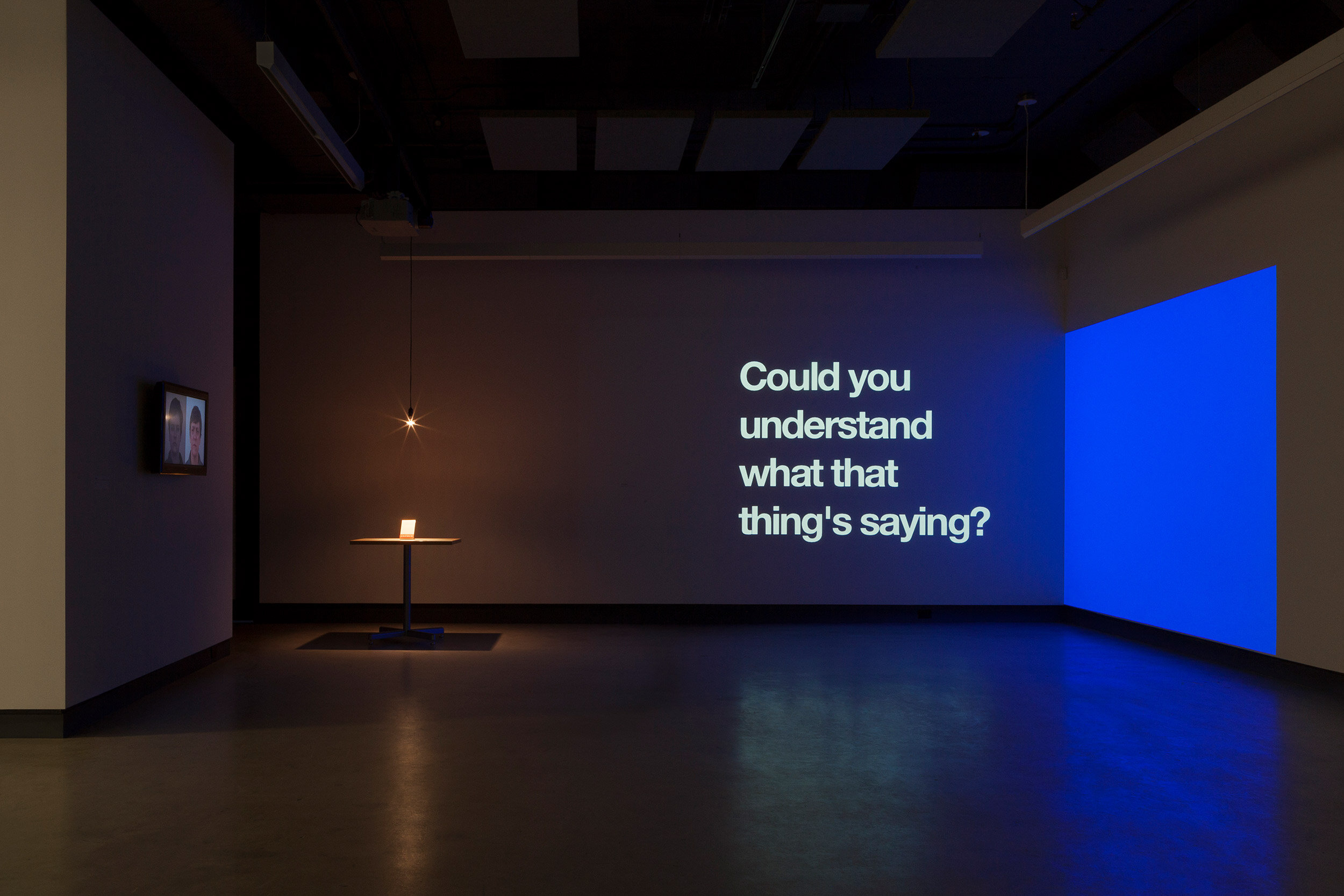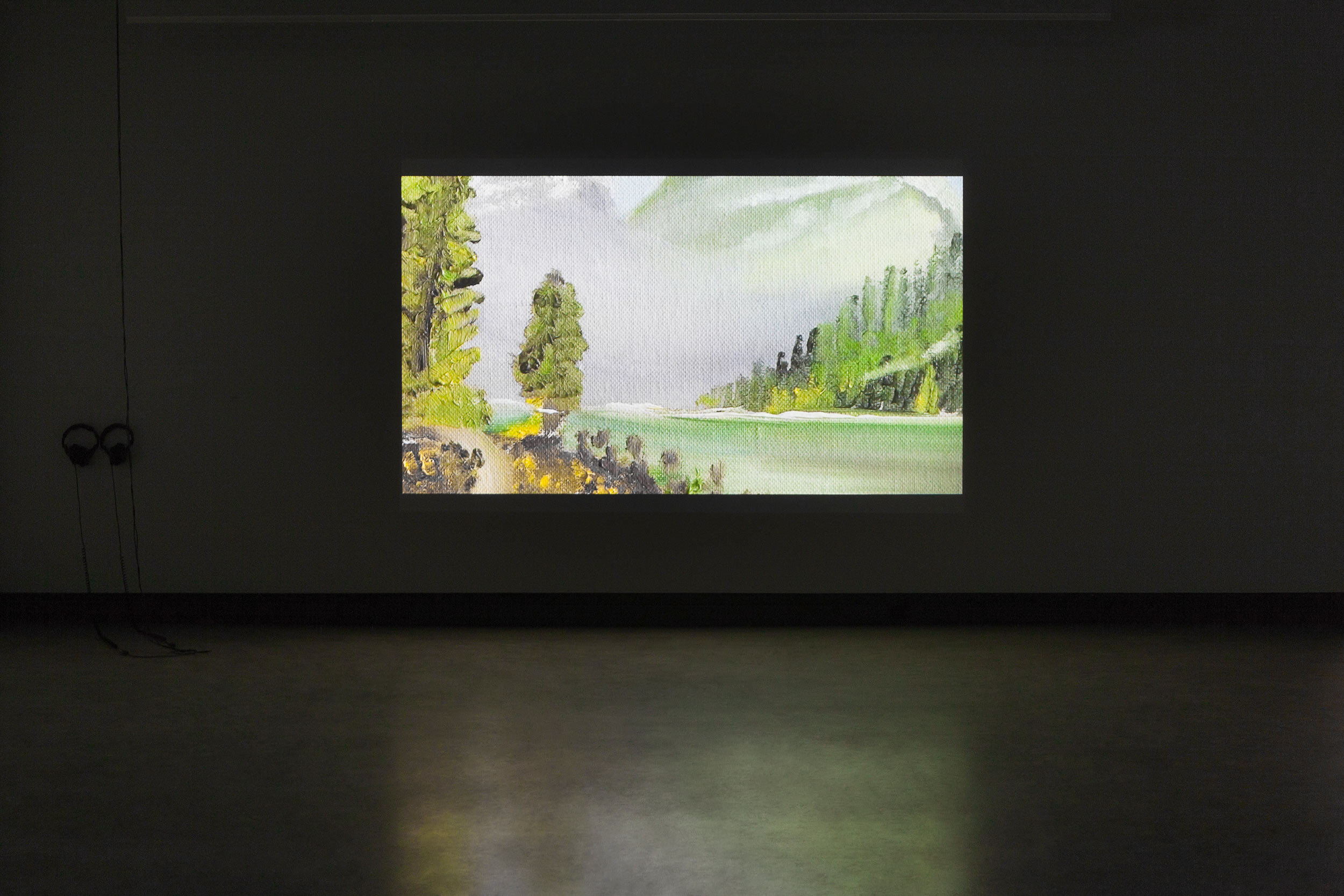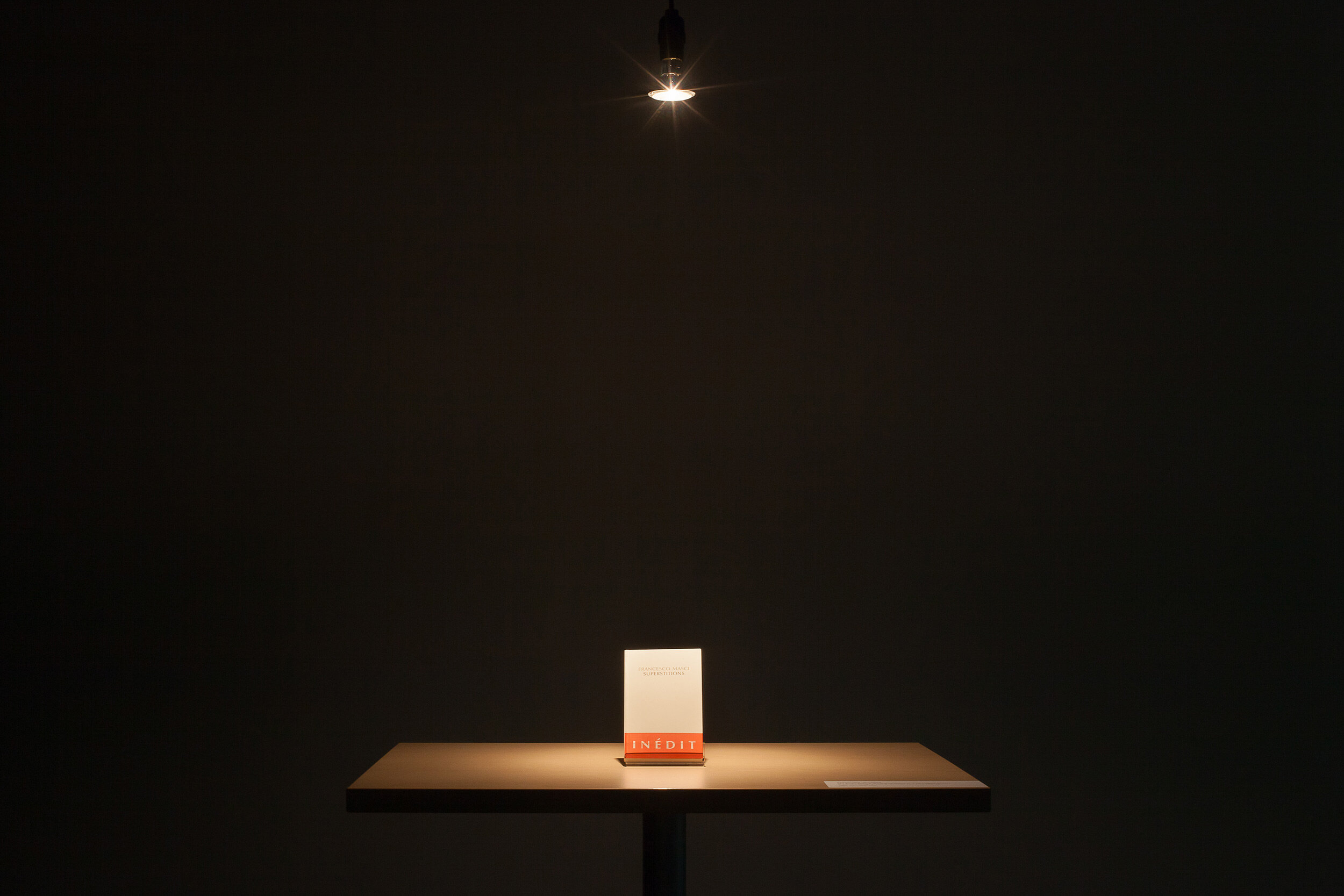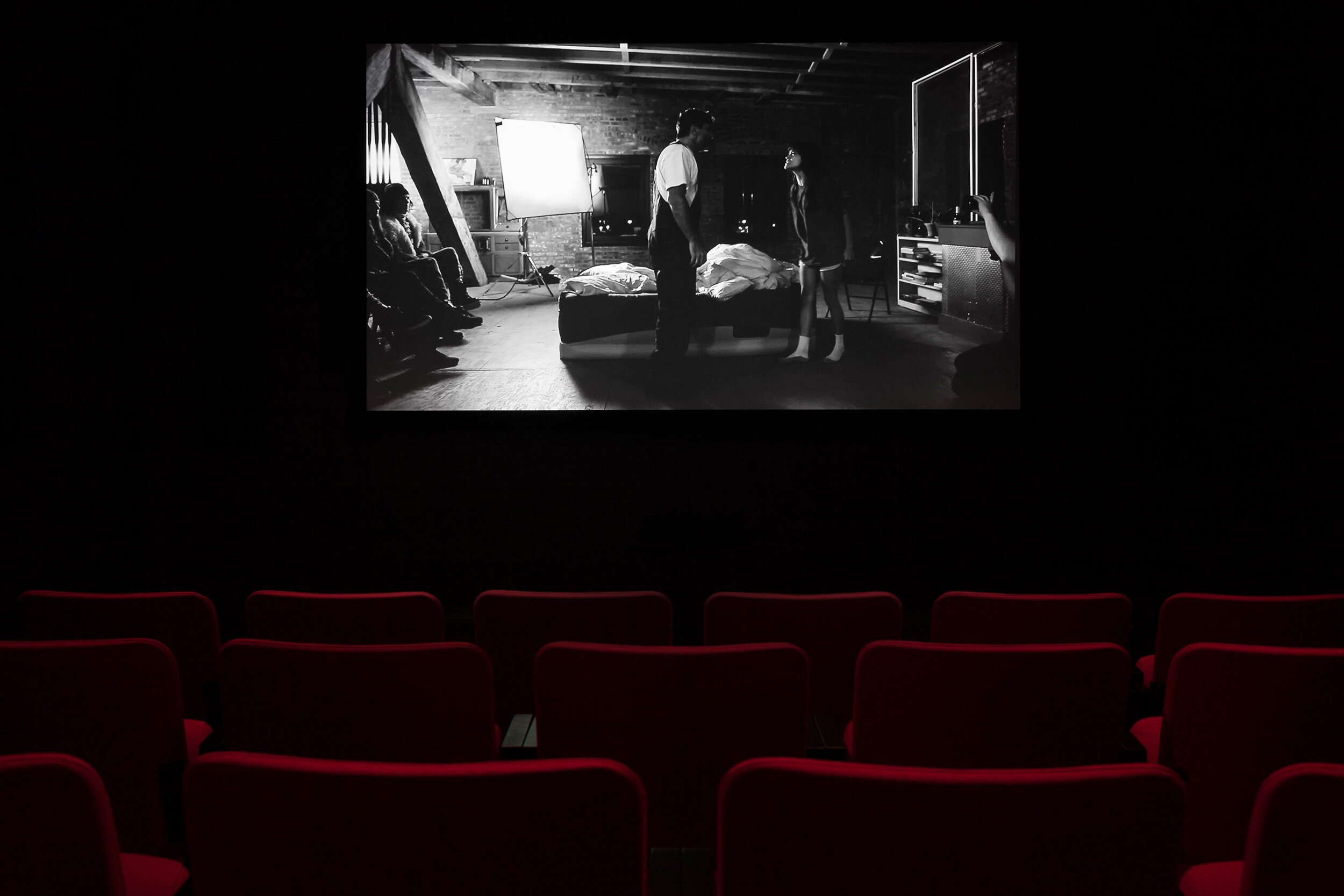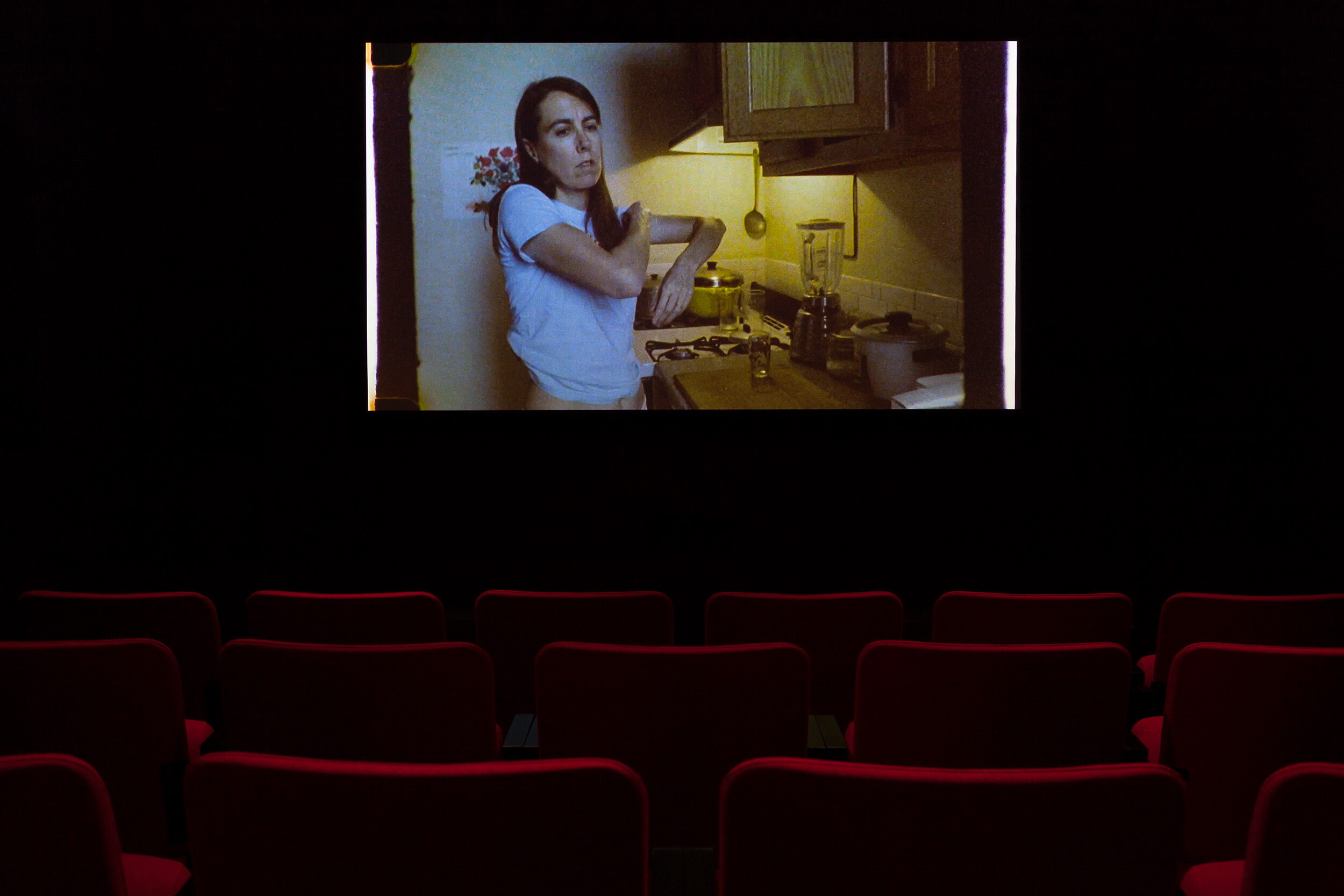Let's be open about... L'art conceptuel
From April 21 to June 18, 2016
Opening on April 21 at 7 pm
A proposal by France Choinière developed in collaboration with Daniel Olson, including works by Jo-Anne Balcaen, Alejandro Cesarco, Moyra Davey, Rosika Desnoyers, Alexandre Jimenez, Ignas Krunglevičius, Kelly Mark, Elise Rasmussen, Emilie Serri and traces of Fiona Banner and Sol LeWitt.
Although, according to the artist Joseph Kosuth, all art after Duchamp is conceptual, the movement emerged in the mid-1960s and made its mark with the work of artists such as Vito Acconci, Marcel Broodthaers, Lawrence Weiner, Louise Lawler and Jenny Holzer, to name just these few. Recently Traffic: Conceptual Art in Canada 1965-1980 (1), a large exhibition presented across Canada, offered for the first time an exhaustive survey—and recognition—of Canadian conceptual art by bringing together work by artists including Raymond Gervais, Suzy Lake, Michael Snow, Ian Wallace and Robert Walker. The present exhibition, of course, is not on the same scale, but it presents a few works of the present day which are manifestly an extension of those practices for which the idea, the utterance, is more the object than the object itself. These are works which, from this point of view of conceptual art, are well served by what are rather freely called image-based practices, because from the outset these practices make themselves available in a quite “dematerialised” form and rarely focus on the materiality of the artwork.
The present exhibition has deliberately brought together artists of different generations and allegiances, contradicting somewhat the desire of conceptual art not to be part of an evolutive structure of art. Without reviving the debate over Greenberg’s views, we must admit that a connection and a kind of filiation exist. Less manifest, perhaps, because conceptual art takes pretty much any form and is by nature little concerned with the development of an aesthetic or formal program which would offer easily identifiable visual referents. That said, it is clear that the majority of artists who today position themselves along this line of thought are also sensitive to the formal qualities of their work. They seek, we might say, to bring about the fortunate encounter of sense and the senses.
In a text entitled Conceptual Art as Art, Ian Burn remarked that the profound nature of conceptual art is that it replaces the usual art object with an utterance about art. This is a common practice, if not an article of faith, for many artworks defining themselves as conceptual. It is also a way of implicitly ensuring that the idea prevails over every other manifestation whose premise is aesthetic in nature.
Thus conceptual artists appropriate both experience and the idea, and language becomes a decisive element of their manoeuvres. Herein lays the peculiar relation that exists between conceptual artists and words. And yet this is where their paths become confused, in an interesting manner, because the term language “translates” in art as the expression of an aesthetic form. Paradoxically, language itself is the language of conceptual art, the decisive element of its aesthetic: every idea or concept must necessarily be expressed by, or at the very least pass through, language. Thus what should shelter the conceptual artist from the risk of bearing the stigma of a given aesthetic turns out, in numerous artistic practices, to be the formal feature of a conceptual approach.
Under this impulse, the present exhibition brings together some of the current art practices which have a special and sometimes complex connection with language, or even use the language of conceptual art itself to, in a sense, reset conceptual art. This art opens itself up easily to the shift from what is said by language to actually investigating that language. The works shown here all multiply the function of words, which become the manifestation of the subject, the form and the idea. Using language as the very morphology of conceptual art, they all have a singular connection to language, whether the import of a kind of sub-text, a narrative-within-a-narrative structure, a desire to translate the language of conceptual art or a reversal of meaning which uses conceptual art itself as a motif.
The American artist Sol LeWitt, seen as one of the major intellectual figures in conceptual art, was born in 1928 and died in New York in 2007. He was a minimalist artist who was known for his metallic and geometrical structures, the bases of his sculptural and conceptual experiments. In 1967, in Paragraphs on Conceptual Art, LeWitt postulated the primacy of the intellectual process over the object presented, thereby championing a conception of artistic experience dissociated from form. He followed up a couple of years later with Sentences on Conceptual Art (1969), which remains to this day a major reference on conceptual art. These statements on conceptual art, placed at the entrance to the exhibition, set out the founding principles of the conceptual art movement and act like a filter through which to read the works found in the exhibition.
At the same time, still with the idea of continuing to think about the use of language and also as a way to provide a filter for the exhibition, we were keen to present—but turned in on itself in a sense, as it is in the form of a book—Fiona Banner’s work entitled Fiona Banner, 2009. Fiona Banner has a great interest in publishing, and since 1997 has published a variety of volumes in connection with her artworks and performances under the imprint The Vanity Press. Banner’s work explores the semiotic link between form and content and offers a contemporary perspective on the conceptual art heritage. Born in 1967, shortly before Sol LeWitt produced his Sentences on Conceptual Art, Banner made this artwork/performance soon after his death. For this project she had tattooed in the small of her back an ISBN (International Standard Book Number) corresponding to the legal deposit of herself as a book. While we might think of this as a social commentary on branding or as a feminist gesture of appropriating the self, Banner sees it as a putative biography and a kind of self-portrait, playing on what she calls a kind of conspiracy of narrative. Among those artists who have contributed to a kind of rebooting of conceptual art, Banner is a major figure. She uses the language of this art to place overtop of the discourse on art a second reading, in this case the impulse to narrate oneself.
(1) Organized and circulated by the Art Gallery of Alberta, the Justina M. Barnicke Gallery (University of Toronto), and the Vancouver Art Gallery in partnership with the Leonard and Bina Ellen Art Gallery (Concordia University) and Halifax, INK.
Jo-Anne Balcaen
Jo-Anne Balcaen was born in La Broquerie, Manitoba in 1971 and lives in Montreal. Her work has been shown at various venues in Quebec, the rest of Canada, Europe and the United States. The recipient of numerous grants, she examines the need for artists to bring themselves up to date with respect to the mechanics of the art world and the often complex rules governing it. Her recent works are based on her experiences as an artist and on the often hidden aspects of the artist’s psyche.
Mount Rundle focuses on a small painting created by Balcaen at the age of twelve showing the mountainous landscape of Mount Rundle, the emblematic mountain reigning over the Banff Centre, the mythic site par excellence of artistic creation in Canada. By means of an impersonal, even distancing narrative, Balcaen tells how decades later she found herself in a residency in Banff. Much more than an anecdotal story, this video expresses the unpredictable nature of the creative process, its difficulties and the often restrictive system within which one must function. While the object presented in no way shares contemporary aesthetic qualities, the conceptual object displays great perspicacity.
Alejandro Cesarco
Alejandro Cesarco was born in Montevideo, Uruguay in 1974 and now lives in New York. He is an artist and occasional curator whose work has been presented extensively on the international stage. In 2011, he received the prestigious Bâloise Art Prize. Informed by literary theory and the precepts of conceptual art, his work explores the translation, not to be confused with the interpretation, of reality we carry out. His videos, photographs and texts address and return to questions of narrative, using repetition, appropriation and transposition to thwart any attempt to establish a linear narrative between memory and language.
Allegory, or, The Perils of the Present Tense shows us a woman reading Alberto Moravia’s novel Contempt. These images merge with others suggestive of memory and with intertitles often composed of quotations which encourage a kind of narrative speculation. It is interesting to note that Jean-Luc Godard also gave us his version of Contempt in an influential film, precisely because of this peculiarity of creating a narrative within a narrative and a film within a film, defying tradition in a unique manner, both spatio-temporal and creative. Like Godard’s film, Cesarco’s work also positions itself as an infinite composition of connections and associations, a complex language in which memory becomes time and is invested with a logic that is at once spatial and visual. Cesarco has described this work as a muted melodrama.
Moyra Davey
Moyra Davey is a multidisciplinary artist born in Toronto in 1958 whose work is exhibited regularly in Canada, the United States and Europe. A professor at Bard College’s International Center of Photography, she lives and works in New York. Her photography and videos, inspired by her great interest in reading and writing and by the overlooked aspects of everyday life, explore the texts and lives of major authors and thinkers through narratives whose structure is deliberately deconstructed in a dialogue blending quotations and personal reflections. Davey’s often modest works examine our connection to the world, production and consumption, and novelty and obsolescence.
Made up of multiple levels of reading, Notes on Blue is Davey’s response to and echoing of the work and legacy of the filmmaker, political activist and writer Derek Jarman, and in particular his final film, Blue. This film was made while he was suffering from AIDS, knew death was near and was practically blind, allowing him to perceive only the colour blue. We might associate this blue with Yves Klein’s monochromes, but it also brings to mind the blue found in many commonly-used technologies. Like a personal note—almost a meditative monologue—which constantly circles back on itself, Moyra Davey’s work joins disparate observations, anecdotes of the lives of various authors, quotations and personal comments in a series of fortuitous events in which PJ Harvey meets Fassbinder.
Rosika Desnoyers
Rosika Desnoyers was born in 1968 in Cornwall and presently lives in Montreal. Her work has been shown in various institutions in Canada and the United Kingdom. She holds a doctoral degree from Concordia University and completed a post-doctorate at the Université du Québec à Montréal. She is the co-author, with David Tomas and Marc James Léger, of Millet Matrix: Contemporary Art, Collaboration, Curatorial Praxis, and author of the forthcoming volume A Genealogy of Berlin Work: The Industrialization of Needlepainting in Nineteenth-Century England. Since the 1990s, Desnoyers has developed an interdisciplinary art practice based on the study and collecting of needlepoint as a means to explore the social function of art.
The Creative Industry of Mary Linwood is a case study rooted in interdisciplinary and transcultural knowledge. Examining the aesthetic mechanisms of embroidery, painting and the digital image, the work examines the processes of mechanized image manufacturing. In this way Desnoyers creates a historical and artistic dialogue that explores the social and disciplinary relations of artistic production. Her project is based on the meticulous production of an object by means of the technique she calls needlegraph, which approaches a curatorial practice that brings together diverse artefacts.
Alexandre Jimenez
Alexandre Jimenez was born in Réunion and holds a master’s degree in visual and media arts from Université du Québec à Montréal. As an artist and curator—the two functioning practically as communicating vessels—his work takes place during artistic events as a way of interrogating them. Questioning at one and the same time the event’s modalities of monstration, its educational mechanisms and the processes of artistic legitimation, his projects often require the visitor’s involvement in order to be activated and pushes them, not without irony, to address their own fiction. By imitating and redeploying in new ways pre-existing artistic forms and systems—or not—Jimenez questions art’s mechanisms and its democratisation. In this spirit, the present notes are in no way authorised by the artist and represent only the views of their author.
The Italian-born contemporary philosopher Francesco Masci, who writes in French, is especially interested in questions around culture and its role in modern and postmodern society. In his book Superstitions, Masci explores the idea according to which the present-day art system offers the most spectacular examples of the mechanism which succeeds in reconciling the rhetoric of change and the practice of impotence. Thus art, unable to produce a distinct object, cannot truly transform society. Jimenez’s work, entitled Un exemplaire de Superstitions, Francesco Masci, Éditions Allia, 2005, à donner par jour, is part of his efforts to push back the boundaries of artistic validation. His gesture confirms the conceptual precept which champions the primacy of the idea over its representation. It is thus an ironic take on the modus operandi of the object he represents. Jimenez has created no object other than that of questioning the very objective of art.
Ignas Krunglevičius
Ignas Krunglevičius is a Lithuanian artist and composer born in 1979 and currently residing in Oslo. Nominated in 2010 for the Nam June Paik award and recipient of the Sparebankstiftelsen DnB NOR Stipendutstilling Art Prize, he has presented his work throughout Europe, notably at the 14th International Architectural Exhibition at the Venice Biennale, and participated in numerous contemporary music festivals. His video work is highly influenced by his music practice. In his installations, Krunglevičius investigates the mechanisms of power in particular and explores the coded systems put in place to control—to manipulate—individuals and their social environment. His work frequently draws on transcriptions of group therapy, interrogations and various records of psychiatric interviews.
Interrogation is a video installation based on a literal transcription of a police investigation into a murder carried out in the United States in 2004, when Mary Kovic (a pseudonym) killed her husband with his gun. Made up of two text-based image tracks and a pulsating sound track, the work offers a sound and textual rhythm which sustains the systemic logic and counter-narrative of the interaction. Here interrogation is used as a system for deconstructing language by imposing an audio apparatus which further blurs the tracks and acts directly on the viewer’s perception.
Kelly Mark
Kelly Mark was born in Welland, Ontario in 1967 and lives in Toronto. Her internationally-recognised work can be found in numerous public collections. She is the recipient of several awards and grants, including the K.M. Hunter Artist Award and the Chalmers Art Fellowship. Mark explores the multiple strata of pathos and humour found in recurring everyday tasks and the sometimes routine rituals of daily life. Her installations, videos, performances and other works use modest materials and means (TV sets, wallpaper, neon, tattoos, multiples, clips of popular culture sounds and images, etc.). Revisiting certain conceptual strategies, and in particular the idea of repetition, Mark’s works are part of an obsessive impulse to order and structure everyday life and its social rituals as a way of marking individuality.
33 Minute Stare, made in 1996, has the appearance of a kind of endurance test between the video camera and the artist. Mark stares at the camera for more than thirty-three minutes, until her eyes start to dilate and she can no longer focus and hold her gaze. With Trying to Remember, Sometimes Wishing I Could Forget, made exactly twenty years later, she recreates the initial work while trying to recall what she has forgotten since, thereby extending the ritualistic language of the earlier work. In each case, Mark uses her presence as a formal frame through which we witness the flow of time, a flow multiplied many-fold by the unmistakable amount of time separating the two works.
Elise Rasmussen
Elise Rasmussen, born in Edmonton in 1977, is a 2016 Fellow of the Art and Law Program in New York and is currently an artist in residence at Pioneer Works. Her work has been seen widely in Canada and at venues such as the Brooklyn Museum and the Irish Museum of Modern Art in Dublin, where she held a residency. She explores the political and cyclical relations existing between past and present through the use of texts and historical elements which, when re-imagined, straddle the thin line between reality and fiction. More precisely, Rasmussen examines histories deemed “minor” and, in this way, reflects on the mechanisms and sometimes interpretative nature of written history.
Ana Mendieta died on 8 September 1985 after falling from a window of the apartment she shared with her husband, the famous sculptor Carl Andre, who was tried and acquitted of murder. He remains the sole witness of the events of that night. In Variations, Rasmussen, drawing on three contradictory statements made by Andre, creates different potential versions of this fateful event. These scenarios, improvised by actors and commented on by the artist and the audience, make it possible to interpret and rewrite a putative history. With this work, Rasmussen employs various strategies pertaining to conceptual art by appropriating its experiments and its ideas through multiple propositions.
Émilie Serri
Of Belgian-Syrian origin, Émilie Serri, born in 1984, is a Montreal artist, photographer and author-composer whose work is marked by the static image and experimental film. Her films have been shown in various festivals and institutions across Canada and in France and Switzerland. In 2012 she won the Jury Prize for Best Film at the Images Festival in Toronto. After initially studying journalism, in 2011 she completed a film studies degree at Concordia University and since then has privileged the materiality of celluloid film.
In the case of the work presented here, however, Ceci est (This is a film), Serri departs from this practice by imitating film stock in a video work. She thus creates a discursive space in which the viewer is forced to make the connection between the qualities of the film base and the video image while being receptive to two layers of discourse: that of the artist (in written form) and that of the institution (an off-screen voice). In all this interweaving of meaning, the work is reduced to its discourse alone, bringing the constitutive system of works of art to the forefront. The language becomes material, while at the same time pursuing its conceptual ends.
Dazibao receives financial support from the Conseil des arts et des lettres du Québec, the Canada Council for the Arts, the Conseil des arts de Montréal, the Ministère de la Culture et des Communications and the Ville de Montréal.


